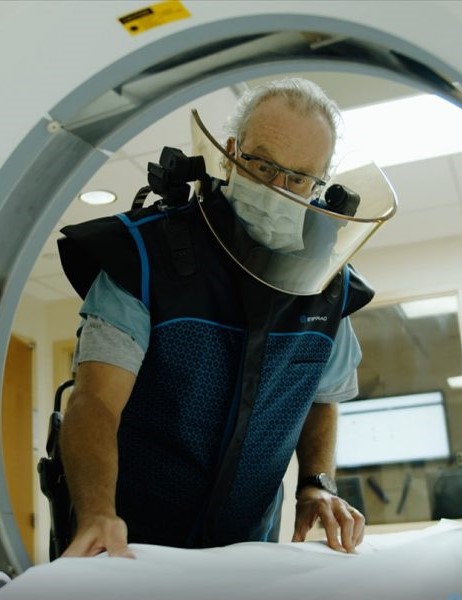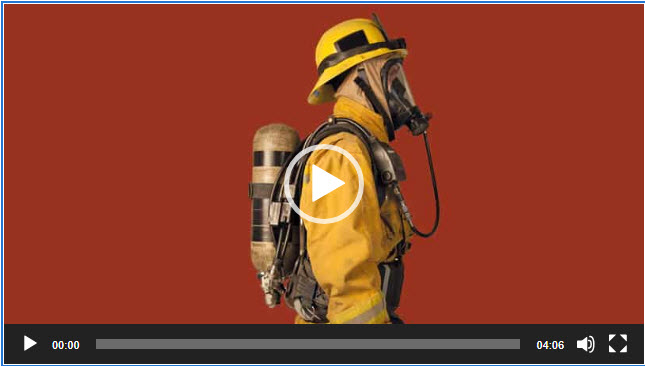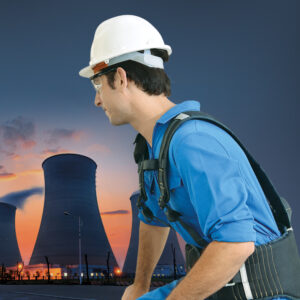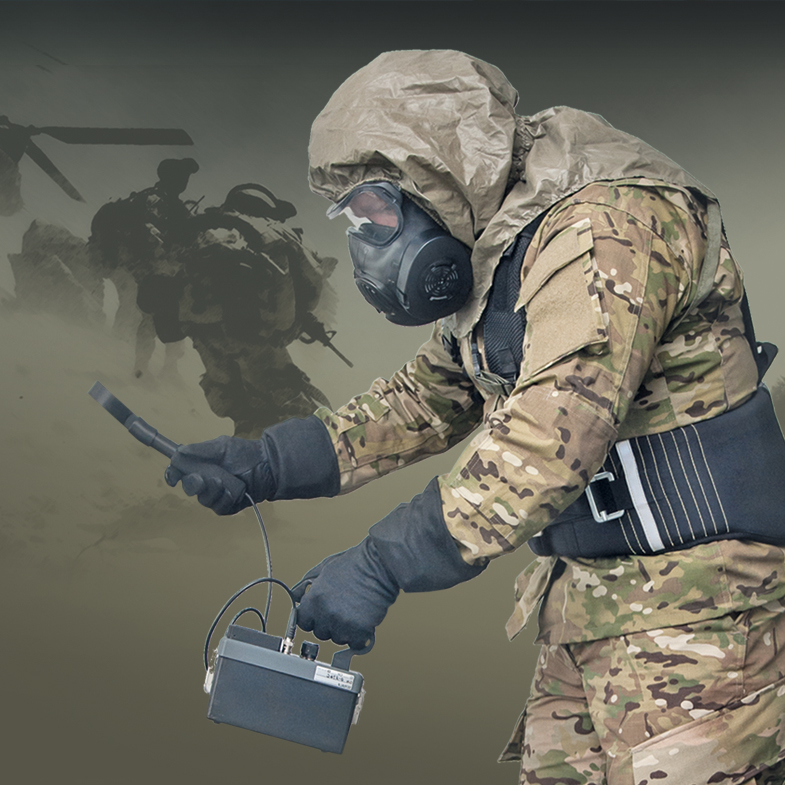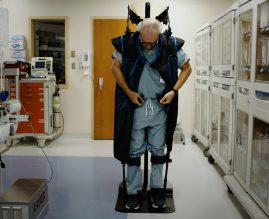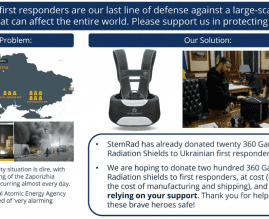Complete Guide to Radiation Protection
11.04.23 | Saturday | Jordan Houri, BSc, MSc
Radiation protection is crucial, not just in the medical field but also in national security, emergency response, and civilian use.
We’re living in a world where the risk of dirty bombs and nuclear weapons is more than theoretical—it’s a real concern. In these high-stakes scenarios, first responders sprint toward the danger, not away from it.
And here’s the problem: Traditional training and equipment don’t always suffice when protecting these heroes from harmful radiation exposure.
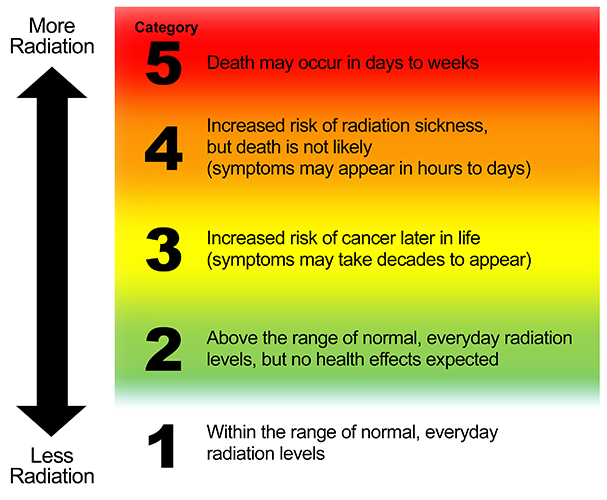
In the medical arena, radiation is frequently used in fluoroscopic imaging and is commonly employed in specialties like orthopedics and interventional cardiology.
However, many medical professionals lack comprehensive training in radiation protection.
This is where the three pillars of radiation protection come into play: justification, optimization, and dose limitation.
Coupled with the ALARA principle, or As Low As Reasonably Achievable, these guidelines aim to control exposure while recognizing the essential role of radiation in both diagnosis and treatment.
Understanding the radiation scale hazard is vital for preparedness and protection, especially when using radiation suits and radiation protection devices. Let’s break down the scale for clarity.
- Category 1: This is your baseline level. We’re talking about natural background radiation that’s present everywhere—think cosmic rays or naturally occurring radioactive elements in soil. There’s generally no threat to human health here.
- Category 2: Now, the radiation levels are exceeding natural background rates for the area. However, the intensity is still too low to cause noticeable health effects. Stay aware, but generally, no need for alarm.
- Category 3: This is where we start worrying about long-term risks like cancer. Exposure at this level, especially over an extended period, can potentially lead to leukemia or thyroid cancers. It’s not immediate, but it’s a long-game concern.
- Category 4: We’ve crossed into the danger zone. Immediate symptoms like nausea, vomiting, and fatigue indicate Acute Radiation Syndrome (ARS). Treatments are available, but severe cases can lead to lasting damage.
- Category 5: This is the red alert level. Extremely high doses can lead to immediate organ failure and death. Emergency medical treatments may provide some relief, but the chances of survival are slim.
Each category presents its own set of challenges and requires specific protective measures. When facing radiation hazards, knowledge is your first line of defense, and specialized gear is your armor. Know the scale, assess the risks, and equip yourself appropriately.
We bring a game-changing approach to radiation protection. Ours isn’t your typical protective gear; it’s an innovation designed to save lives when seconds count, and traditional methods fall short.
StemRad focuses on safeguarding key body regions, such as the pelvic area, home to critical stem cells. The radiation suits are geared for maximum mobility and protection from harmful radiation. They are vital in medical settings and for first responders facing the potential devastation caused by dirty bombs or nuclear incidents.
Our technology is redefining radiation protection, making it an indispensable asset for anyone exposed to the dangers of ionizing radiation, whether in a hospital or a disaster zone.
StemRad Radiation Suits for Maximum Protection
Medical Use – StemRad MD
Say goodbye to cumbersome lead aprons that strain your back and expose your face.
The StemRad MD is a game-changer for medical professionals who need top-notch radiation protection without sacrificing comfort or mobility.
It’s like a radiation protection exoskeleton that carries the weight, so you don’t have to.
Elevate your protection level without limiting your freedom to move. StemRad MD: Full Protection, Full Mobility.
Arrive first, risk last. StemRad’s 360 Gamma for first responders is a lifeline when every second counts in a radiological emergency.
Tailored to shield vital bone marrow, this wearable shield is your armor against invisible, lethal gamma radiation.
It’s time your bravery met its match in protection.
Don’t just respond; be resilient with StemRad 360 Gamma.
Nuclear Industry – 360 Gamma
When adequate isn’t good enough, turn to StemRad 360 Gamma.
Built for the unforeseen risks that nuclear industry personnel face, this is the only radiation shield that offers meaningful protection while keeping you mobile.
Whether handling high doses or responding to emergencies, shield your most vulnerable areas with 360 Gamma.
Military – 360 Gamma
For military heroes in the world’s riskiest settings, the StemRad 360 Gamma delivers essential protection from deadly radiation.
From battlefield to homeland, it’s the only military radiation protection designed to safeguard bone marrow and vital organs, giving you a fighting chance against gamma radiation threats.
Don’t just survive—thrive in hostile conditions with 360 Gamma from StemRad.
Civilian Use – 360 Gamma
Be prepared for the unimaginable. Whether you’re evacuating or emerging from a shelter, the StemRad 360 Gamma offers civilians unprecedented protection against the harshest form of radiation—gamma. It’s wearable peace of mind for you and your family.
The StemRad 360 Gamma: Because every civilian deserves a radiation shield.
Astronauts – AstroRad
Journey beyond low Earth orbit without the fear of radiation. Co-developed with Lockheed Martin, AstroRad ensures you’re shielded from harmful solar particle events.
It’s more than equipment; it’s your safeguard in the cosmos. Adventure into space, return as a hero. AstroRad: The astronaut’s ultimate safeguard.
In a world where radiation risks are ever-present, from medical diagnostics to natural disasters, StemRad is redefining the standard for radiation protection devices. Our diverse range of radiation suits—from StemRad MD designed for healthcare workers to 360 Gamma for first responders, military personnel, and civilians—sets a new bar in safeguarding against lethal radiation.
We’re making strides in space, too; our AstroRad suit is manifested on NASA’s EM-1 moon mission as the pioneering radiation shield for deep space travel. With StemRad, you’re buying a product and investing in a life-saving innovation.
Radiation exposure can be harmful, so it’s important to minimize risk. The three basic principles of radiation protection are time, distance, and shielding:
Reduce the time you are exposed, increase your distance from the radiation source, and use proper shielding.
Following basic radiation safety measures allows the benefits of radiation technology while limiting dangers. Take precautions when working near radiation sources by limiting time of exposure, keeping your distance, and using appropriate certified lead shielding between you and the radiation source. Check radiation levels periodically to ensure they meet local safety regulations.
Ready for next-level protection? Choose StemRad and give yourself and your team the best chance to survive & thrive in a radiologically hazardous environment.
What Is Radiation Protection And What Is It Used For?
Living with radiation is a reality, present in natural materials and medical procedures. While controlled exposure is often beneficial, unforeseen emergencies require awareness of radiation protection principles: time, distance, and shielding.
Time: Minimize exposure duration. In radiation leaks, reducing time spent near the source is crucial. Professional shields can extend safe exposure times.
Distance: Put space between yourself and the radiation source. Remember the fire analogy: farther away, the safer you are. Distance significantly reduces radiation’s harmful effects.
Shielding: When time and distance limitations arise, shielding becomes essential. Lead remains the most effective material for blocking various types of radiation, especially powerful gamma rays. Modern lead shields combine protection with user-friendly designs, unlike the cumbersome versions of the past. For crucial organs and bone marrow (where blood cells are produced), innovative lightweight lead vests with exoskeletons ensure optimal protection and mobility for medical staff and rescue teams.
These basic principles, although simplified, provide a powerful tool for emergency preparedness. Understanding them can empower you to make informed decisions and protect yourself and others in the face of unexpected radiation exposure.
Contact Stemrad for a free radiation protection consultation
FAQs
- How does StemRad’s technology differ from traditional radiation protection methods?
StemRad’s radiation suits take a targeted approach to radiation protection. Unlike traditional lead aprons or full-body suits that may be too bulky or less effective, StemRad focuses on shielding vital areas of the body that contain critical stem cells, like the pelvic region. This results in maximum protection without sacrificing mobility.
- Is StemRad’s radiation protection technology validated by any credible organizations?
Yes, StemRad’s technology has undergone rigorous testing, including by the U.S. Department of Energy’s PNNL lab. It has also entered into agreements with NASA through the Israel Space Agency and its partner Lockheed Martin for using its gamma radiation shielding technology in deep space missions.
- What types of radiation suits does StemRad offer, and who can benefit from them?
StemRad offers a diverse range of radiation suits designed for various applications:
- StemRad MD is aimed at medical professionals who require radiation protection during procedures like fluoroscopic imaging.
- 360 Gamma is for first responders who might face radiological emergencies and is also tailored for use in the nuclear industry and the military.
- AstroRad is designed to protect astronauts from solar particle events in deep space.
- Civilian versions of 360 Gamma are also available for everyday people who want to be prepared for radiation emergencies.
Each suit is tailored to the unique challenges and requirements of its intended user, offering optimized protection against specific types of radiation.
Read about us in the media:

Lead Scientist, Space Exploration
